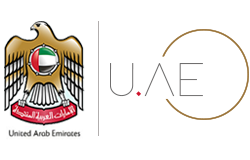Space missions
Emirates Lunar Mission - 2024
Under the Emirates Lunar Mission – 2024, the UAE aims to develop a lunar rover in the UAE and send it to the moon by 2024. The aim of the mission is to study various aspects such as thermal properties of the lunar surface and the formation and components of the lunar soil. It involves carrying out a series of measurements and tests that will expand human understanding of the Moon-plasma, photoelectrons and dust particles located over the illuminated part of the lunar surface. The project aims to pave the way for discoveries that can contribute to the development of science and specialised high-precision technologies in the space sector.
Rashid, the rover
The rover, named Rashid in honour of the late Sheikh Rashid bin Saeed Al Maktoum, former Ruler of Dubai, will land on those areas of the moon that have not been explored before. It will gather and send data and images relating to its findings. The data will create a knowledge base that will help in building a research station on the moon and in answering questions related to the formation of the solar system. The rover will try new exploration techniques which will help test the UAE’s capabilities before embarking on manned missions to Mars.
Challenges
The lunar rover is expected to face many challenges, because the environment on the surface of the moon is harsher than that on Mars, and the temperature can reach minus 173 degrees Celsius. The focus of the Emirati team at MBRSC is to design a lunar rover capable of bypassing all potential obstacles while performing its mission.
Timeline
A team of Emirati engineers, researchers and experts at Mohammed bin Rashid Space Centre (MBRSC) have started the design of the lunar rover. The design is expected to be finalised by 2021. The rover is expected to be manufactured by 2022, tested during 2023 and launched by 2024. MBRSC will partner with an international entity for landing the lunar rover on the moon.
Space centre strategy
Announced in September 2020, the Emirates Lunar Mission is one of the key components of the new Mohammed Bin Rashid Space Centre Strategy 2021-2031. The strategy aims to boost the Centre’s international competitiveness, build new international knowledge partnerships and develop Emirati capabilities in the field of space exploration and space technologies.
Once completed and launched, the UAE will become the first Arab country and the fourth country in the world to successfully land on the moon after the United States of America, Russia, (formerly the Union of Soviet Socialist Republics) and China.
Emirati interplanetary mission 2028
Read about the Emirati interplanetary mission 2028.Mission to Mars
The UAE Space Agency and MBRSC have signed an agreement to build an unmanned probe to Mars. The UAE would be the first Arab and Islamic country to be sending an unmanned spacecraft to Mars. The UAE would send the spacecraft by 2021, coinciding with the country's 50th anniversary. The UAE Space Agency would execute the mission with support from international partners.
The UAE’s Hope probe began its journey to Mars on 20 July 2020 from Japan’s Tanegashima Space Centre (TNSC) in Kagoshima Prefecture, southwestern Japan. The aim of Emirates Mars Mission is to provide a complete picture of the Martian atmosphere and the reasons for the absence of an environment suitable for life there.
Watch this video about UAE mission to Mars



